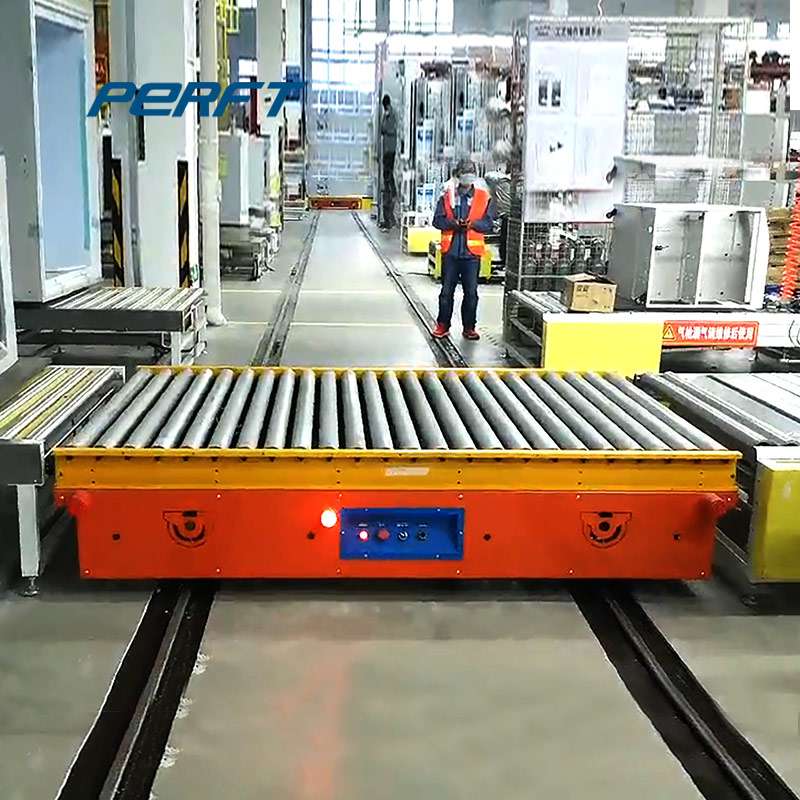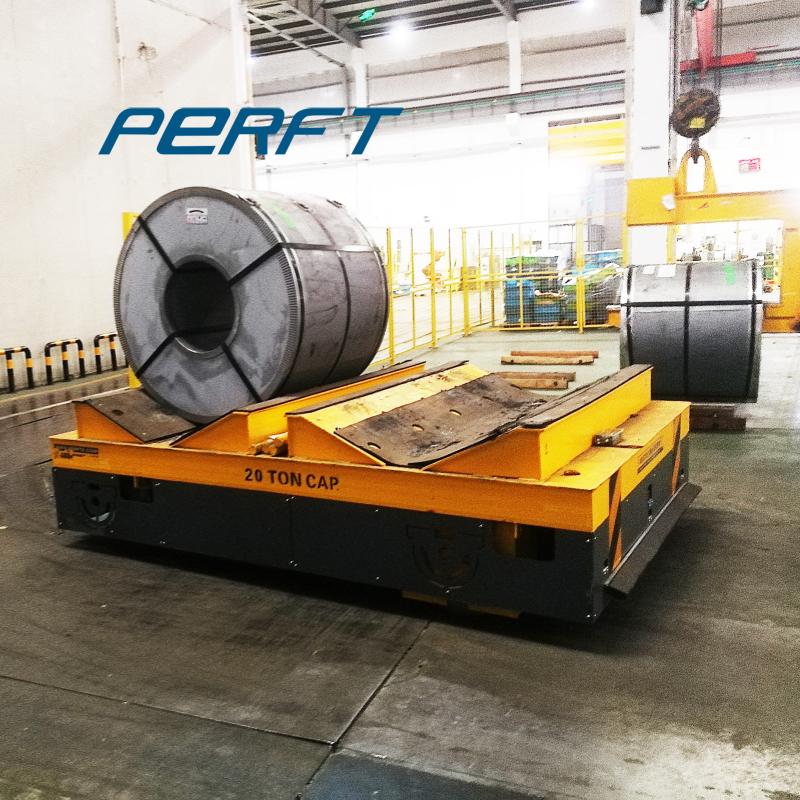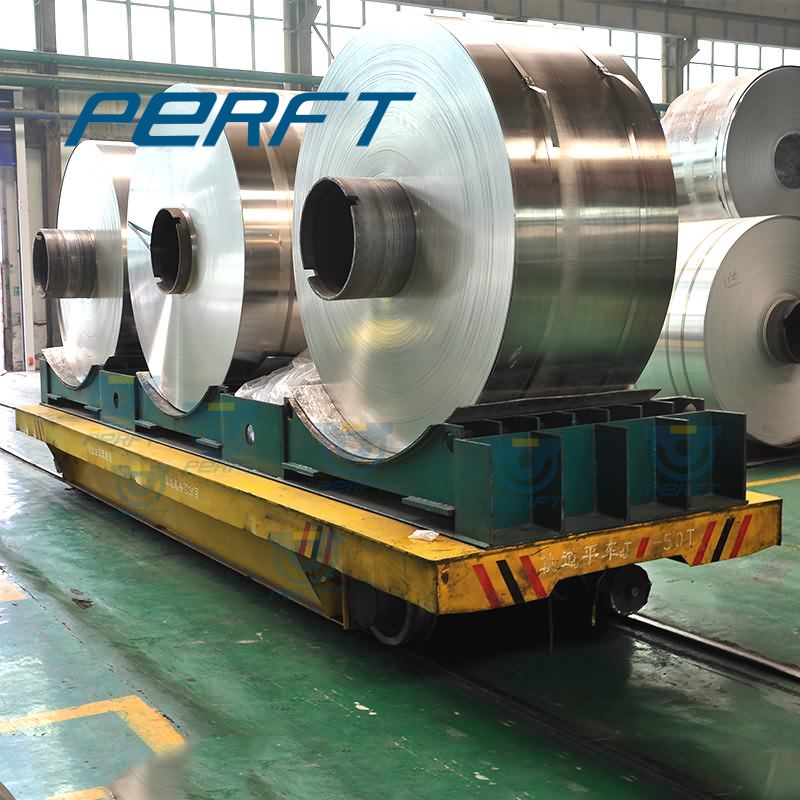What to Know Before Buying Electric Rail Shuttle Cart?
In factory goods transportation scenarios, rail shuttle cart have become core equipment for enhancing internal logistics efficiency due to their stable load-carrying capacity and controllable operational trajectories. Unlike conventional transport equipment, their selection and deployment involve multiple dimensions such as track installation, power supply methods, and safety standards.
Blind procurement may result in mismatched equipment with production requirements or even pose safety hazards.
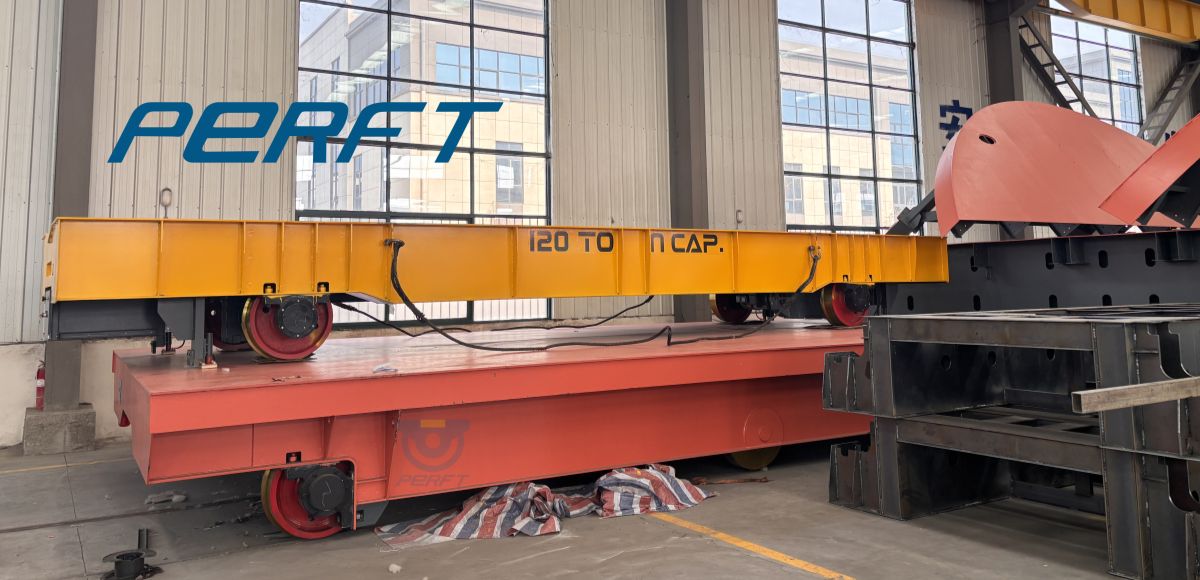
Core Characteristics of Electric Rail Shuttle Cart
At their core, electric rail shuttle carts are factory-specific transport equipment combining “electric drive + rail operation.” Their fundamental traits directly dictate suitable applications. Before purchasing, clarify two points:
First, they rely on electric power, eliminating fuel requirements. Their low-noise, low-pollution operation makes them ideal for enclosed or semi-enclosed environments like factory workshops and warehouses.
Second, rail platform trolley must run on pre-installed, insulated tracks—a key distinction from trackless with wheel electric transfer cart. This necessitates simultaneous track layout planning during procurement to avoid costly retrofits later.
Simply put, the advantages of rail platform trolley lie in its “stable transport and strong load capacity,” but its limitations are also evident: its operational range is restricted by the tracks, and it cannot turn flexibly. Therefore, it is an ideal choice if factory transport routes are fixed (e.g., between workshops or between warehouses and production lines).
If frequent adjustments to transport paths are required, other types of material handling equipment should be considered.
Motorized Transfer Cart on Rail Heavy Load Solution
Selecting the Power Supply of Rail-Guided Transport Systems
The power supply method for rail-guided transport systems determines their operational range, suitable environments, and maintenance costs. Currently, there are 4 mainstream types, which should be matched to the usage scenario:
- Battery-Powered
Relying on onboard batteries for power eliminates the need for external cables. Its advantage lies in high flexibility—even when the track curves, it remains free from cable constraints. Installation is straightforward, requiring no complex track modifications.
However, operating time must be monitored. Suitable for low-frequency transport with short single-run distances (e.g., intra-workshop transfers), it necessitates regular charging and maintenance.
- Low-Voltage Track Power Supply
Transmits electricity through the track itself, eliminating the need for portable power sources and offering unlimited operating time. Ideal for 24/7 continuous operation (e.g., large-scale factory assembly line transport). The drawback is that the track must be insulated. If the factory already has non-insulated tracks, this method cannot be used, and retrofitting costs are high.
- Cable Reel Power Supply
Power is supplied via a cable reel, ensuring stable power delivery. However, the cable length limits the operating range, and repeated winding/unwinding can cause cable wear, requiring regular inspection and replacement. This method is more suitable for straight tracks and short-distance transport scenarios.
- BusbarPower Supply
Power is supplied via contact between a conductor rail and a collector. This method offers a wide operating range and low maintenance costs. However, it has stringent environmental requirements—use in dusty, humid, or corrosive gas environments (e.g., sandblasting rooms, paint booths) can easily cause poor contact issues.
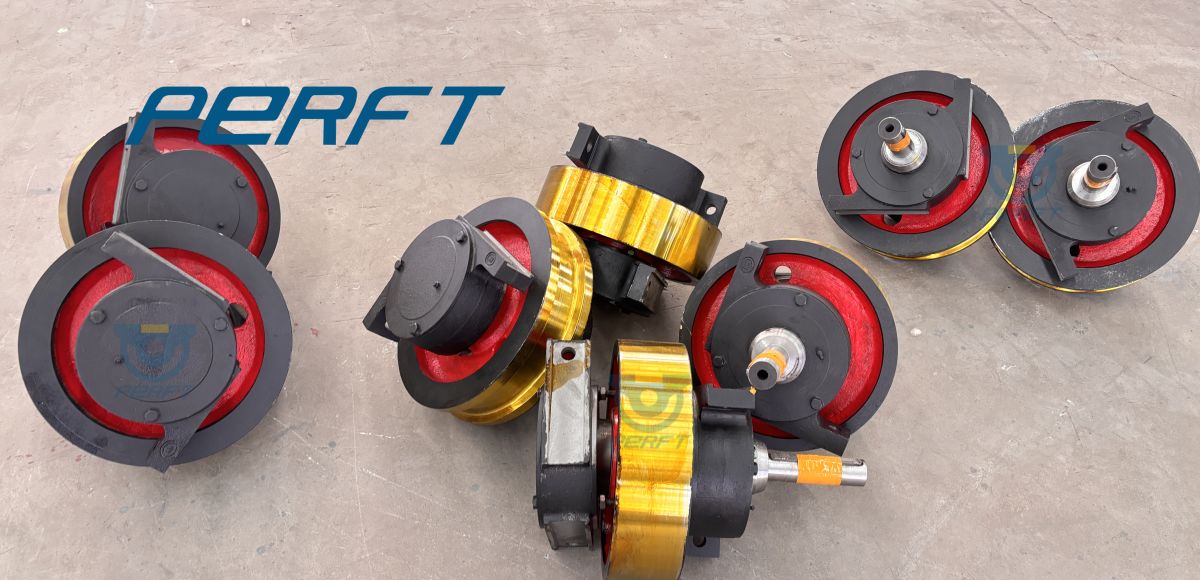
6 Core Parameters about Transfer Cart on Rail
- Load Capacity
This fundamental parameter must be based on the maximum weight of daily transported goods. Overloading is strictly prohibited. It is recommended to allow a 10%-20% margin above actual load capacity to prevent accelerated equipment wear from prolonged full-load operation.
- Platform Dimensions
Must match cargo dimensions — oversized cargo on a small platform poses safety risks, while an excessively large platform wastes space and increases costs. Provide cargo length, width, and height for customized platform design.
- Operating Speed
High speeds are unnecessary for factory transport; 5-10 km/h typically suffices. If personnel traverse the route, select speed-adjustable equipment to ensure safety.
- Track Condition
If tracks are pre-installed, verify insulation: non-insulated tracks cannot support track-powered models. For new installations, coordinate track design with the manufacturer.
- Curved Routes
For curved routes, prioritize battery-powered models—eliminating external cables and preventing tangling or pulling during turns. For straight tracks, consider track-powered or conductor rail systems to mitigate range concerns.
- Special Environmental Requirements
For use in sandblasting or paint booths, select dustproof and explosion-proof models rail shuttle cart. When transporting high-temperature components like steel ladles, implement high-temperature protection for electrical components and gearboxes. For low-temperature workshops, verify battery and motor compatibility with cold conditions.
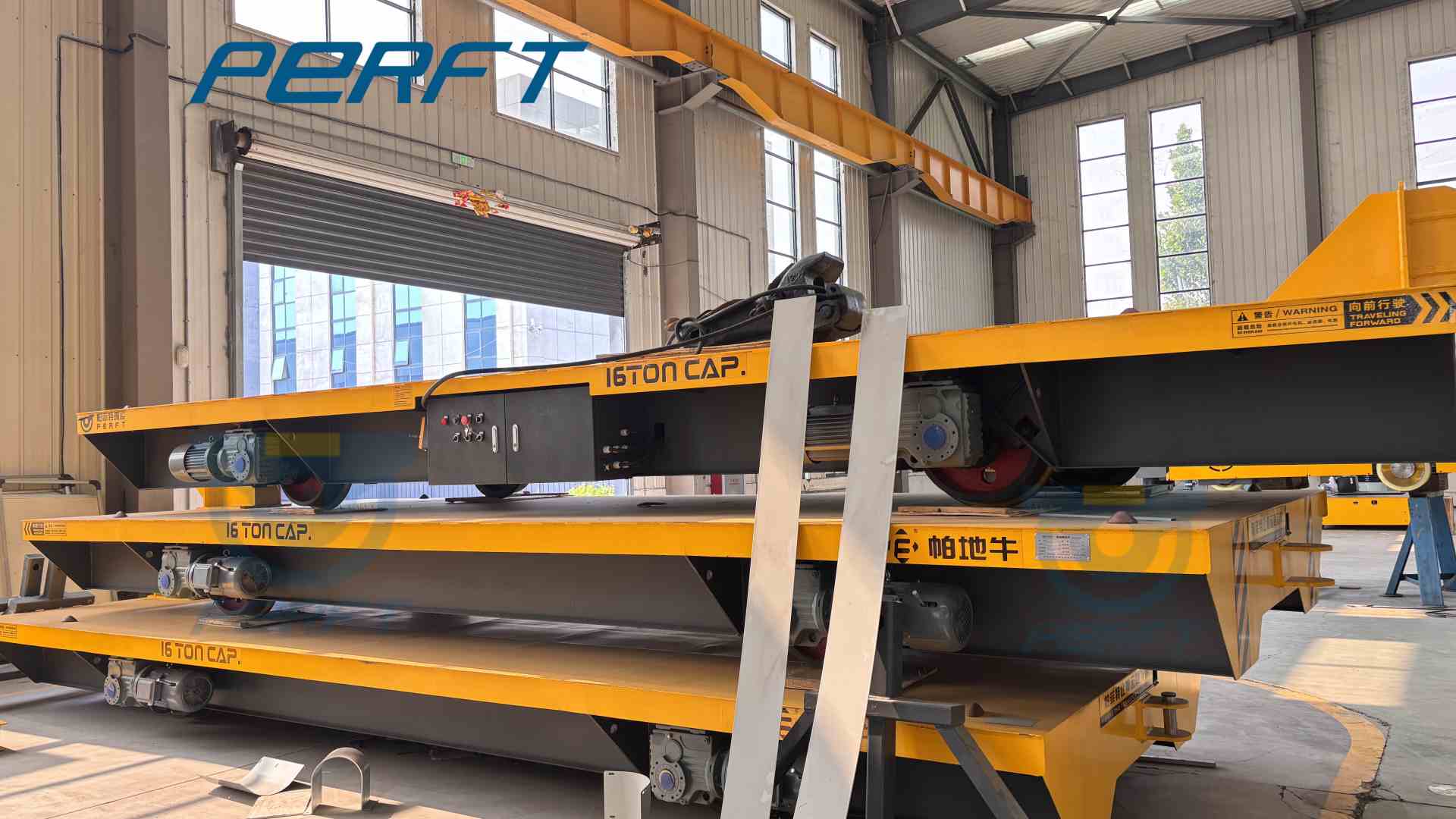
Safety Regulations about Transfer Platform Handling Vehicle
Do not transport overloaded or unidentified-weight cargo — Overloading may cause motor overload, track deformation, or even derailment.
Do not transport cargo when operational signals are unclear — Confirm dispatch signals and start/stop commands are clear before transport.
Do not transport cargo with personnel or loose objects on board — Standing personnel or loose objects may fall, posing personal safety risks.
Do not transport cargo that is poorly secured or unbalanced — Cargo may tilt or fall during transport, potentially damaging rail transport equipment or blocking tracks.
Do not transport cargo when equipment structures or components have safety issues — Such as brake failure or abnormal wheel noises; repair must be completed before use.
Do not transport cargo in dimly lit work environments or when command signals are unclear — Poor visibility increases the risk of collision accidents.
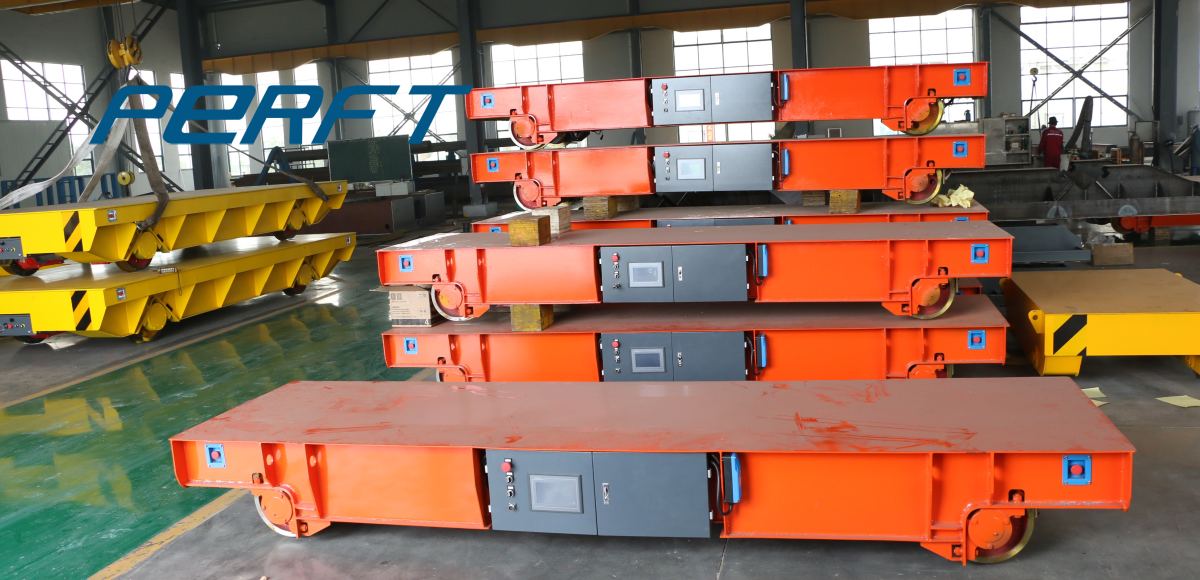
Purchasing electric platform trolley is not as simple as “ordering based on specs.” We recommend a three-step preparation process:
First, clarify transportation requirements (load capacity, route, environment).
Next, match the power supply method and core parameters.
Finally, confirm safety standards and post-purchase maintenance services.
Only by integrating “practicality, safety, and cost-effectiveness” can you select equipment truly suited for factory production, unlocking its full potential to enhance logistics efficiency.
Back to List

